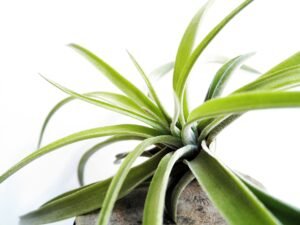How to Grow and Care for Carrots in your Garden

Plant Attributes
Common Name: Carrot
Botanical Name: Daucus carota
Family: Apiaceae
Plant Type: Vegetable
Size: 6 to 12-inch root, 1-foot foliage height; 9-inch spread
Sun Exposure: Full sun to partial shade
Soil Type: Loose, well-draining soil
Soil pH: Slightly acidic (6.0–6.8)
Bloom Time: Spring (second growing season)
Hardiness Zones: 3–10 (biennial grown as an annual)
Native Area: Europe, Southwestern Asia
Carrots are primarily root Vegetables and are biennial. Among its various varieties, notable ones include the Royal Cross, Coral Cross, Kinko Santina Royal, and Scarlet Nantes. Additionally, there are Pusa Kesar, Kuroda-35, New Quarza, Santini, Yellow Rocket, etc. These varieties are quite popular among farmers. The Pusa Kesar variety is capable of producing seeds.
Properly cultivating carrots can be a profitable agricultural endeavour. There is a year-round demand for them. This article will discuss how to cultivate carrots, management, and proper care guidelines.
Carrot Care
The germination rate of carrots is 80%. After the seeds have germinated, they must be removed. Keep the weeds clean in the field of carrots. Both too dry and too wet are harmful to carrots. So be aware of the water system.
After 8-10 days of sowing keep the weak plants at a distance of 4 inches by keeping the strong plants. If there are weeds in the carrot field, they need to be removed. Weeds can cause infections, and attract rats and pests.
Problems You Might Encounter While Growing Carrots
- Soil Issues: If the soil is too dry, seed germination may be delayed. On the other hand, if the soil retains too much water, the seeds can rot. As a result, germination may not occur as expected.
- Pest and Fungal Attacks: Pest and fungal attacks in the carrot field can cause significant damage to the seedlings. The leaves of the plants can be destroyed and may rot.
- Nutrient Deficiency: The soil may lack essential nutrients. Problems can arise due to deficiencies in calcium and phosphorus, leading to lower yields and smaller carrots.
- Root Rot: If the soil does not have proper drainage, waterlogging can cause the roots to rot.
- Harmful weather: carrot seedlings do not like excess heat. Carrot yield is not good if the temperature is high. Again, there are many problems with carrot seedlings even in heavy rains.
Selection of Soil
The lowland is suitable for carrot cultivation. Selecting soil according to the crop is very important. For carrots, sandy loam and loamy soil are suitable. The soil should have good drainage. A well-ventilated environment is ideal for carrots. The optimal temperature for carrot cultivation is 15-25℃, but temperatures above 25℃ can hinder growth.
Sunlight
Carrots require full sunlight. They do not grow properly if they receive less than 6 hours of sunlight. In insufficient sunlight, smaller carrots are produced.
Sowing seeds
Carrot cultivation is best in winter. The ideal time for sowing carrots is from mid-September to mid-December. Carrots prefer cooler soil temperatures, usually 55 ° F to 75 ° F (13 ° C to 24 ° C). Temperatures above 25 ° can hinder growth.
Sowing at this time ensures that the seeds are not exposed to the intense heat of summer or the harsh cold of winter. It usually takes 10-20 days for the seeds to germinate, but if the seeds are soaked for 24 hours, they germinate in 7-10 days.

Preparing the Land for Carrot Cultivation
- Dig the soil 8-10 inches deep as carrot roots spread far.
- Properly level the soil.
- Ensure the soil is loose as it aids in seed germination and proper growth of seedlings.
- Ensure the soil does not retain water.
- It is better to sow seeds in rows for better care of the seedlings. The distance between each row should be 20-25 cm, and seeds should be sown such that the distance between each seedling is 10 cm.
- Carrot seeds are very small, so mix them with dry ash or soil for easy sewing.
- Sow 3 or 4 kg of seeds per hectare.
How to Irrigate the Field
After sowing the seeds, if the soil moisture decreases, you need to irrigate the field regularly with a small amount of water. After irrigation, ensure that water does not accumulate. Once the seedlings emerge, regularly weed the field to keep it clear of weeds. Irrigate the field once more when the seedlings first start to emerge to ensure good germination. After that, irrigate once more before harvesting. Generally, the crop can be harvested and is suitable for consumption approximately 70-80 days after the seedlings emerge.
Pruning
After the carrot seedlings emerge, the smaller seedlings need to be removed. Thin out the seedlings in the row. Trim off dead leaves and large leaves. Ensure that there is about 3 inches of space around each seedling.
Fertilizer
For high-quality and good carrots, proper fertilization of the land is essential. Fertilization should be done considering the variety, age, and time of the crop. Correct fertilization according to the type of soil yields expected crops. Organic Fertilisers are the safest, posing no risk to the crop or environment. Consult with an agricultural officer for the correct decision on fertilisation.
How to fertilise the land
Apply all manure and TSP, and half of the urea and SOP during land preparation.
Apply the remaining half of the Urea in two phases: the first phase 10-12 days after seedling emergence and the second phase 30-40 days later. Apply the remaining SOP within 30-40 days of seedling emergence.
Growing carrots in a pot
If you don’t have any low-lying land, you can grow carrots in pots on your rooftop or in your yard. For this, choose a medium-sized pot. A pot size of 10-12 inches is ideal. It is important to have good drainage in the pot. Prepare the growing medium well. The soil in the pot should be loamy or sandy loam. Soak the seeds in the morning and plant them in the afternoon. After the seedlings emerge, remove the smaller ones and keep the area free of weeds. Water regularly. Follow a schedule for applying pesticides and fertilisers.
Common Pests & Plant Diseases
- Carrot plants may be attacked by aphids, which eat the tender parts of the plant. To control aphids, use any one of the following insecticides in the recommended dosage: Rogor L-40, Classic 20 EC, Tidfett 75 SP, Tido 20 SL, or apply Bikao-1.
- If attacked by leafhopper pests, take prompt action. This is known as the carrot yellow virus disease. This pest causes the leaves to turn yellow and curl. If this pest attacks, cut off the affected branches and clear the surroundings—Spray Sobicron 425 EC 2 ml or Rilothrin 1 ml in water.
- To control carrot leaf blight disease, fungicides like Tebuconazole + Trifloxystrobin (e.g., 5 grams of Nativo) or Propiconazole (e.g., 5 ml of Tilt per 10 litres of water) should be mixed in water and sprayed thoroughly on every 5 decimal areas every 12-15 days, 2-3 times.
- To control Southern Blight disease in carrots, fungicides containing Carbendazim (e.g., Noin or Aimcozim 20 grams) or sulfur-based fungicides (e.g., Cumulus 40 grams or Gaivert 20 grams) should be mixed in 10 litres of water and sprayed thoroughly on every 5 decimal areas every 12-15 days, 2-3 times.
- To control Black Rot, Violet Root Rot, Soft Rot, or bacterial leaf blight in carrots, fungicides containing Copper Oxychloride (e.g., Delight 50 WP or Goldton 50 WP 20 grams) should be mixed in 10 litres of water and sprayed thoroughly on every 5 decimal area every 12-15 days, 2-3 times.
- To prevent carrot splitting, irrigate regularly. Avoid applying excessive nitrogen fertilisers or growth hormones.
Note:( Apply insecticides and fungicides according to the type of pest. Exercise caution when applying insecticides. Ensure water does not stagnate in the field during application. Read the insecticide bottle labels carefully and apply as directed. Additionally, wear a mask and avoid eating or drinking during spraying. Harvest or market the crop 7-15 days after applying insecticides).
Harvesting the Crop
Carrots are ready for harvest within 3 months of sowing. To obtain nutritious and high-quality carrots, the crop should be harvested between 100 to 125 days after sowing.
Cultivating carrots correctly will yield results as expected. Follow each step of seed collection, land preparation, and seed sowing as per the rules. Regular irrigation and pest control will make your carrot field a good example of a healthy crop. Harvest and store the crops properly. Happy gardening!
FAQ
- What is the appropriate time for carrot cultivation?
Ans: Carrots grow very well in the winter. The ideal time for planting carrots is generally from mid-September to mid-December. Carrot seedlings do not prefer excessive heat.
- What vitamins are in carrots?
Ans: Nutritionists say that 33 % of vitamin A, 9 % of vitamin C and 5 % of vitamin B-6 are available per 100 grams of carrots.
- How many times a day to water the carrot seedling?
Ans: Watering is essential for carrot seedlings, whether they are planted in the ground or in a container. To water, touch the soil in the field or container. If it is not moist, water the seedlings. Depending on the moisture level, you can water the seedlings once a day or once every two days.









